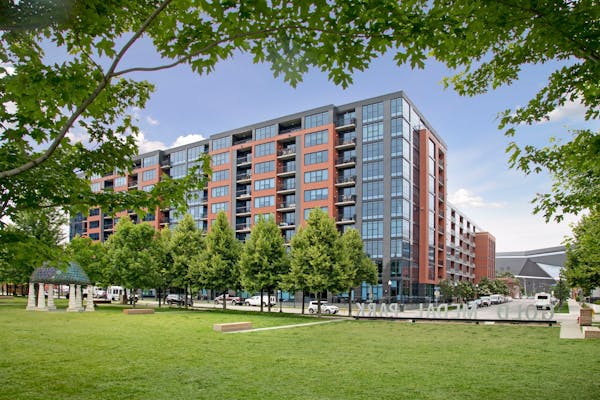Growing up, Paul Lang lived in the "Arch House," in Minnetonka. He was used to the curious questions about the home with the fiberglass curved roof back then. He's still getting those questions now.
"I get comments from people who want to come and see the house. Or, they'll say they know about it from growing up in the neighborhood," he said.
As it turns out, the house off Dominick Drive was a Federal Housing Administration experimental home when it was built in 1965. Lang's father, an engineer at Honeywell, designed the house, working with an architect friend.
"He was ahead of his time in what would be called an energy-efficient home," Lang said. "He called it 'solar gain' in reference to your home or structure gaining heat from the sun."
Designed for solar gain
The house features a double brick wall with insulation in the middle as well as a big skylight and 16 windows that are 5 by 5 feet.
"The brick became a great factor in keeping it warm in the winter and keeping it cool in the summer," Lang said. With the large windows, which were also sealed, "the sunlight would just flood in. In the winter, sometimes the heat didn't even need to kick in until at night when the sun went down."
While Lang can attest to the solar effectiveness of the interior growing up in the house with his three brothers and parents Keith and Elizabeth Lang, it was the exterior that drew the most attention from passersby.
"Probably the most novel structure of the house is the curved, stress-skin roof — unsupported by interior posts or columns. The roof is sandwich construction of plywood, urethane foam and fiber-reinforced plastic — 'built like an airplane wing,'" wrote Lora Lee Watson in a 1966 Star Tribune article about the home.
The roof his father designed — in which two sides slope steeply almost to the ground — was mostly for practical purposes, Lang said.
"Because we live in Minnesota, he made the roof so it would be clear of snow and leaves piling on," Lang said. "The curve lent itself to being a fiberglass roof, and like a fiberglass hull on a boat, there's a lot of curves. Fiberglass got rid of the need for shingles and replaced shingles every however many years. The curved roof was very wind-resistant and aerodynamic."
The roof was also designed to work in tandem with the central air to keep the house cool during the warm weather months. "He made the roof white because in the summertime gray or black roofs can get really hot," Lang said.
Bidding farewell
With their parents now gone, Lang and his siblings have decided to list the two-bedroom, two-bathroom, almost 2,000-square-foot house.
Lang said when the house was built, the inside was considered just as modern, with the design complementing the dome-shaped roof in its own way.
"There were no homes that looked anything like it," he said. "Even the kitchen countertop had a curve and wasn't a square box, and that made it aesthetically unique."
The property is also unique — just more than 2.5 acres, it can be subdivided into two to three lots. And the location offers easy access to Shady Oak Lake, Shady Oak Beach and the Minnesota River Bluffs Regional Trail.
Lang, who is leading the for-sale-by-owner transaction, said the next homeowners will have to decide whether they want to make a major home improvement — the aged roof is due for a replacement — or start from scratch.
"It's just not putting a new roof on it like any other roof. If someone bought the property and has to put $100,000 into the roof, they might think twice about replacing it, so it could most likely be a tear-down," Lang said.
However, investing in a new roof isn't off the table if the next homeowners believe it's worth their while.
"The rest of the structure is good," he said. And "if they wanted to maintain the integrity of the design and have the same look as the roof now, they can easily repeat it. We've got the [original] plans."
Paul Lang (612-418-2920; plang@bkrdsn.com) has the $1.2 million listing.

The 5 best things our food writers ate this week

A Minnesota field guide to snow shovels: Which one's best?

Summer Camp Guide: Find your best ones here

Lowertown St. Paul losing another restaurant as Dark Horse announces closing


